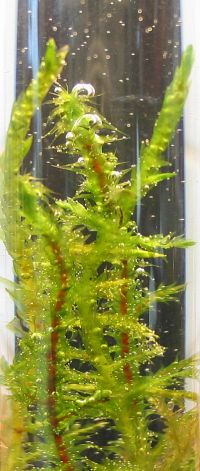Difference between revisions of "Oxygen"
m (→Production) |
|||
| Line 19: | Line 19: | ||
*in [[greenhouse]]s by plants. | *in [[greenhouse]]s by plants. | ||
| − | *by reduction of [[carbon dioxide]] from the martian atmosphere | + | *in [[Photobioreactor|photobioreactors]] by algae. |
| − | *by reduction of oxide minerals | + | *by reduction of [[carbon dioxide]] from the martian atmosphere, or [[w:Carbonates_on_Mars|carbonate]] minerals via either molten salt reduction<ref>https://eprints.lib.hokudai.ac.jp/dspace/bitstream/2115/57796/1/CO2OtakeREMTRev2.pdf</ref> or via [[Carbon_Dioxide_Scrubbers|MOXIE]] style solid oxide electrolysis. |
| + | *by reduction of oxide minerals, either at low temperature in aqueous solution<ref>https://link.springer.com/article/10.1007/s10800-017-1127-5</ref> or at high temperature in molten salt<ref>https://link.springer.com/article/10.1007/s10800-017-1143-5</ref> | ||
*by [[electrolysis]] of [[water]] | *by [[electrolysis]] of [[water]] | ||
| + | *by thermal decomposition of [[water]] through the Sulfur/Iodine<ref>https://doi.org/10.1016/j.ijhydene.2006.05.013</ref> or Zinc/Sulfur/Iodine<ref>https://doi.org/10.1016/j.ijhydene.2015.11.049</ref> cycles. | ||
==Uses== | ==Uses== | ||
Revision as of 02:41, 11 November 2020
| O | 8 |
| Oxygen | |
Abundance: 0.15% atmosphere 46,6% crust
Oxygen (periodic table symbol: O8) is a chemical element that can be found in the atmosphere and in most minerals on Mars. Almost half of the mass of the Martian crust is Oxygen, bound up in various minerals. Oxygen is created in stars from the fusion of Carbon and Helium.
Relevance for life
The metabolism of human beings, animals and various microbes depends on oxygen. The atmosphere of Mars contains only 0,15 % oxygen, which is not enough to support animal or human life.
Production
Oxygen can be produced in situ:
- in greenhouses by plants.
- in photobioreactors by algae.
- by reduction of carbon dioxide from the martian atmosphere, or carbonate minerals via either molten salt reduction[1] or via MOXIE style solid oxide electrolysis.
- by reduction of oxide minerals, either at low temperature in aqueous solution[2] or at high temperature in molten salt[3]
- by electrolysis of water
- by thermal decomposition of water through the Sulfur/Iodine[4] or Zinc/Sulfur/Iodine[5] cycles.
Uses
- Propellant. Oxygen is often chosen as an oxidizer for chemical propulsion.
- Atmospheric component. Standard atmosphere contains 21% Oxygen.
- Chemical reagent
Related Articles
Oxygenlunarp on Lunarpedia.
- ↑ https://eprints.lib.hokudai.ac.jp/dspace/bitstream/2115/57796/1/CO2OtakeREMTRev2.pdf
- ↑ https://link.springer.com/article/10.1007/s10800-017-1127-5
- ↑ https://link.springer.com/article/10.1007/s10800-017-1143-5
- ↑ https://doi.org/10.1016/j.ijhydene.2006.05.013
- ↑ https://doi.org/10.1016/j.ijhydene.2015.11.049







